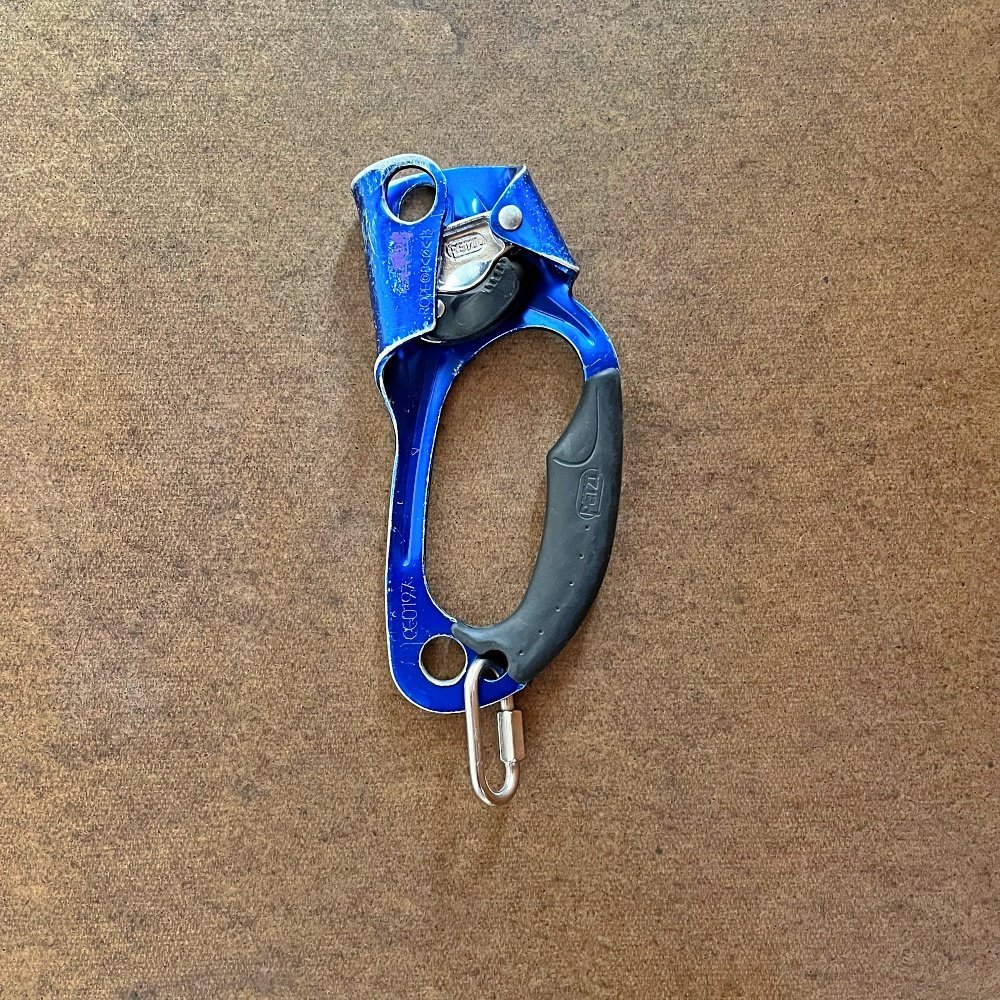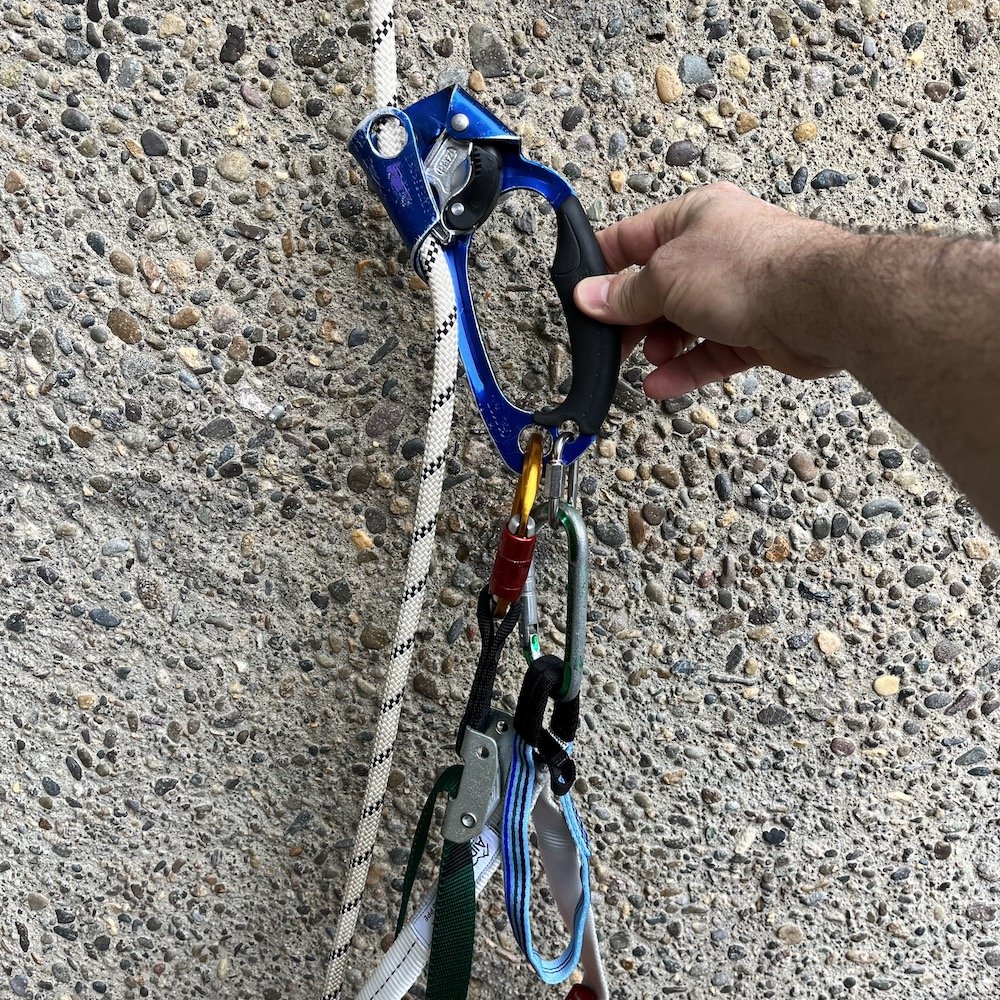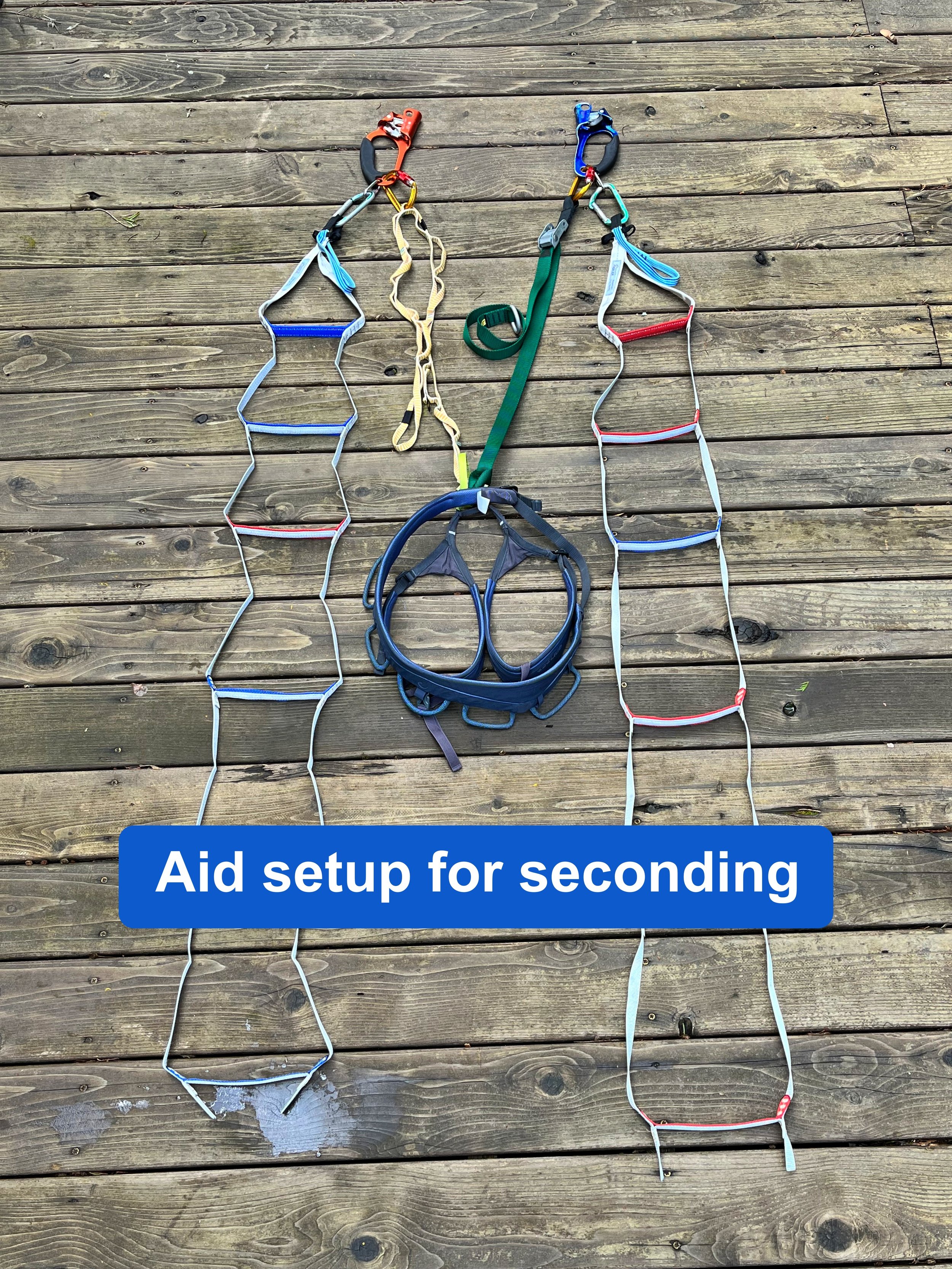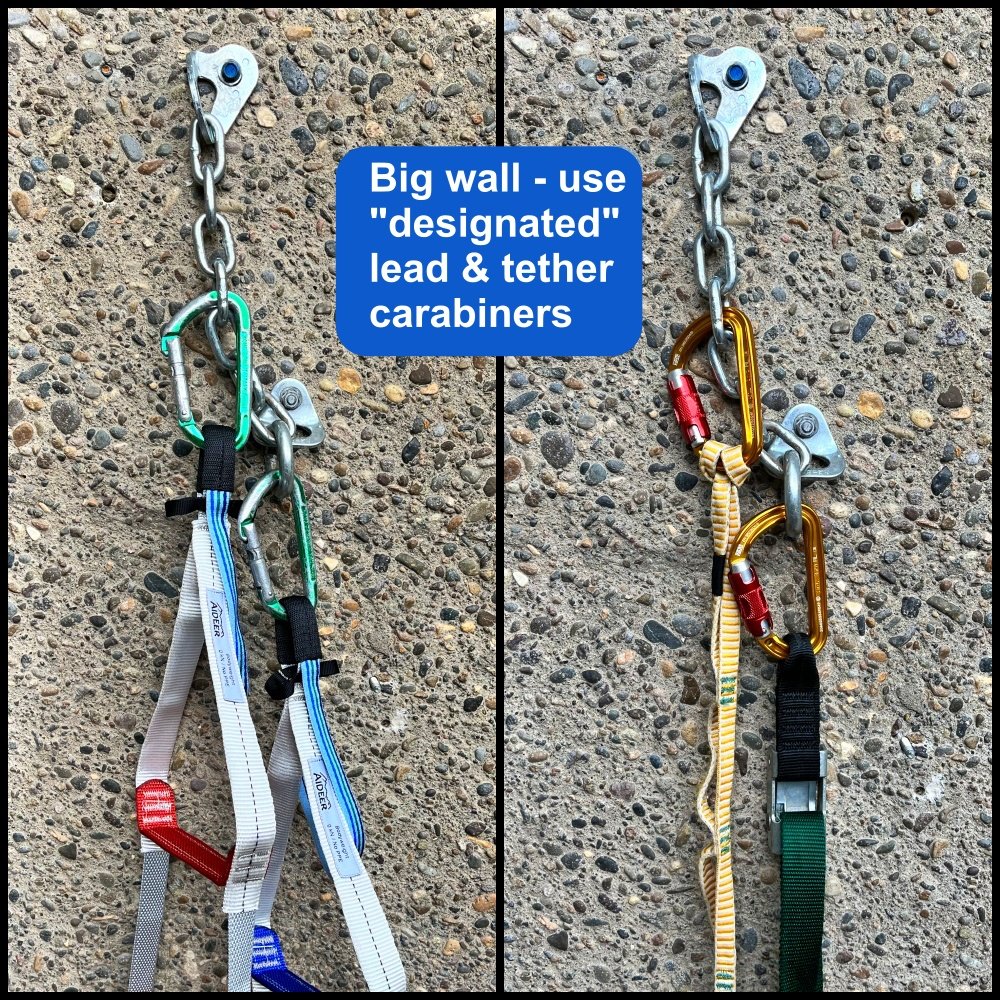Aid climbing: rig for seconding
Having simple, repeatable, and easy to check systems for different components of aid climbing is critical. Your setup for seconding and cleaning is definitely in this category. When you're jugging thousands of vertical feet and and cleaning hundreds of placements, you really want to have this dialed.
Once you have it set up right:
Your tethers are set at the perfect length for efficient ascending
You use designated carabiners on your ladders and tethers, so you’re never patting down your harness looking for a spare carabiner
Transitions (between leading, clipping to anchors, hauling, and cleaning) are faster with minimal futzing around
First off, let's look at an ascender modification.
Most handled ascenders (except the newer Petzl ones) have two holes near the bottom, one large one small.
Add a small (5mm) stainless steel quicklink to the small hole. Crank it tight with pliers. Now you have a designated clipping point for your ladder, which goes on a snapgate carabiner. This not a mandatory mod, and many climbers do just fine without it, but I find it’s quite convenient. Here's an article with the whole scoop.
The main benefit to this is that it lets you more options to easily separate your ascender and ladder if you ever need to. Examples: Cleaning a traverse, when it might be convenient to clip the ladder to the next piece of gear and stand on it, to unweight the piece of gear you need to clean. Or, when you arrive at the anchor and you want to clip your tether directly to a bolt but you're still standing on the ladder, separation like this lets you do it.
Close up of the business end. The quicklink makes a convenient place to clip your ladder that's entirely separate from your tether.
Here’s how it looks on the rope.
Let's look at one good way to set up for cleaning. There are variations on this, but here’s what works for me. Experiment and see if it works for you too.
We’ll first look at the classic two ascenders and two ladders. This works best on lower angled rock up to about vertical, with the route not traversing too much. It does take a little practice so you don’t look like a marionette having a seizure.
There are other setups that can be more helpful if the rock is very steep, or if the pitch is traversing a bit. We’ll look at those at the bottom of the page.
Cleaning Tip: One simple way to keep things reasonably organized when you’re cleaning: get two 60 cm slings, and put one over each shoulder. Clip cams and wires to one side, clip slings and carabiners to the other. At the anchor, you can remove each sling, attach it to something solid and start re-racking on the larger, more comfy primary leading gear harness.
The whole shebang:
Tethers are girth hitched to the tie in points of your harness. The belay loop is fine as well
Both tethers are set at the correct length for efficient jumaring (more on that below)
Designated lead/ladder carabiner is clipped to the quicklink
Designated tether carabiner is clipped to the large hole on the ascender. Locker is mandatory
Ready to clean!
Tether length for seconding
When leading, you have your tether at full extension, because you need to reach high. However, when seconding, it’s critical that the tethers be shortened up to the correct length. If your tether is too short, you’ll make short, choppy, inefficient movements up the rope. If your tether is too long, you can’t reach the handle of the ascender from the rest position, and you’ll have to do some ab-busting contortions to reach it. Here’s an article on how to rig that correctly.
There’s a sweet spot in the middle, and here’s how to find it: With your tether girth hitched to your harness, clip the carabiner and an ascender to the end. Pull on the adjusting strap (or clip a daisy pocket) until the bottom of the ascender carabiner is at your eyebrows. Most people find this to be just about the perfect length.
Set this same length on BOTH tethers - I long thought that you only needed to adjust the length of your top / upper tether, typically your dominant hand (for me the right). However, big wall expert Mark Hudon convinced me otherwise. Mark’s reasoning: while the bottom tether length doesn’t matter if your pitch is straight up or leaning to the right, what about when the pitch traverses to the left? In that case, it’s usually easier to lead with your left ascender, in which case the left tether needs to be the correct length also. So, Mark‘s point is to set both tethers to the same correct length, and you’re good to go in any situation.
Once you get this length dialed, mark the it on your tethers with tape or Sharpie pen so you can set it correctly first time. I like hockey tape for the sewn loop tether: sticky, strong, and cheap.
Gear you need for cleaning (and leading):
2 ladders
2 tethers
2 designated tether locking carabiners
2 designated non-locking leading carabiners
Ladders
Most climbers prefer more symmetrical style ladders rather than those with alternating steps on either side. Good ladders are made by Yates, Fish Gear, and Metolius. My new favorite ladders, featured here, are made by Aideer Big Wall Gear from Sweden. They are top quality, durable in the right places, and very lightweight.
(And let’s not call them “etriers” anymore, okay? That's the French word for “stirrup”, and yes, I had to look that up. =^)
Tethers
Tethers is go by many names - lanyard, daisy chain, leash. I'm going to use the term tether to stay consistent.
The long time standard tether was the sewn pocket daisy chain, but these are considered a bit old school. (I’m using one in the photos to show how it looks, but I use a pair of adjustables.) Yates or Aideer make nice ones with flat webbing. Another option is or something like the dual-tether Petzl Evolv Adjust, that uses rope or cord rather then webbing. There are pros and cons to each style, and we’re not going to into them here.
Andy Kirkpatrick has a great article on tethers, which you can read here.
Designated ladder/lead (non-locking) and tether (locking) carabiners
“Designated” means just that. These carabiners stay permanently attached to the top of your ladders and tethers, and you never pirate ‘em for anything else. Ideally, these are a matched pair, and a distinct model and color from any other carabiners you have.
Here's an article that takes a closer look at what type of carabiner you might want for each purpose.
Steep rock variation: ladder only on lower ascender
Big wall expert Chris McNamara recommends only having a ladder on the lower ascender for steep rock. If your jugging technique is less than perfect (like most of us) you may like this too. Check his video below to see the set up.
Travsering pitch variation: one ascender, one ladder, and a Grigri
For cleaning a traverse, it's can be extremely helpful to be able to do a mini lower out and release tension on the rope. Cleaning with a Grigri lets you do this. Here’s an article on that.
Here’s an action video.







